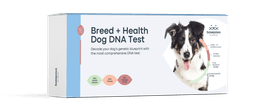Introduction to Dog Hearing Loss
Hearing is one of the most important senses a dog can have as it allows them to adapt and engage with their environment and enables them to communicate and feel safe. However, if the sense of hearing is reduced, it can significantly impact their quality of life. Fortunately, today, due to advancements like hearing aids for dogs, they can regain their sense of normalcy and connection as it provides them with the most effective solution to their hearing loss.
This guide helps you obtain information about dog hearing aids, from hearing loss to strategies for maintaining and fitting these devices.
What Causes Hearing Loss in Dogs?
There are many causes for hearing loss in dogs. It can be a sign of aging for them, just like humans. They may have age-related decline in their sense of hearing. Some dogs develop hearing loss after chronic ear infections, damaging the ear canal. Some suffer injury or trauma, particularly head injuries or exposure to loud noises, leading to the decline of their hearing. Some dog breeds are predisposed to congenital deafness, like Dalmatians. Some others have excess earwax or lodged foreign debris on the ear canal that impedes the dog's hearing. Knowing what causes hearing loss in dogs will lead to an appropriate course of action and treatment and management.
Common Signs of Hearing Loss in Dogs
It can significantly affect the dog's life if you identify the signs of hearing loss early on. How do you spot the signs? When the dog stops responding to your calls or commands, even if they responded accordingly before, it may indicate a hearing issue — not just a behavioral problem. A deaf dog is also easily startled when someone approaches them from behind, especially sneaking. Some dogs may bark louder than before because they cannot hear themselves. They may become unresponsive to sounds like squeaky toys or doorbells, which usually pique their curiosity. Then, some dogs may suddenly change to being withdrawn or anxious when they were previously warm and trusting because they cannot adapt to the reduction in their hearing. You should visit your veterinarian for proper guidance and advice if you notice these signs.
Understanding Dog Hearing Aids
What Are Dog Hearing Aids and How Do They Work?
Hearing aids for dogs are designed primarily to amplify the sound of hearing-impaired dogs. The device helps dogs perceive sounds and their surroundings more effectively. The device has a microphone to capture sounds, an amplifier to enhance the volume, and a speaker to deliver the sound into the ear canal. It must be well-fitted to the dog so that it can function better.
Differences Between Human and Dog Hearing Aids
Human and canine hearing aids share similarities but also have some key differences. The design of dog hearing aids should consider the various sizes and shapes that dogs have. It must also be able to withstand the active lifestyle of dogs and the potential risk of chewing when it comes off. The sound frequency is also tailored to canine hearing ranges, making it different from human hearing frequencies.
Types of Hearing Aids Available for Dogs
Today, there are limited types of doggie hearing aid, and most are adapted from human hearing aid counterparts. Veterinary audiologists design custom-fitted hearing aids that suit each dog's needs. It is not commercially available, but you can have it custom-made for your dog's requirements. Future innovations for these devices may diversify the options you have for your pet.
Diagnosing Hearing Loss in Dogs
How to Recognize Signs of Hearing Impairment
The recognition of the signs of hearing loss in dogs lies in your astute observation. It must start with being aware of any changes in the behavior of dogs, like difficulty responding to your commands or failing to notice common and familiar sounds. There are simple tests you can do at home—clapping your hands behind your dog is one of the examples.
Veterinary Assessments and Tests
Proper veterinary evaluation is essential for getting a definitive diagnosis. Vets may use otoscopy, a physical ear canal examination for damage or obstruction. There is also a test called Auditory Brainstem Response (ABR), which measures the brain activity in response to a sound stimulus. Vets may also request a tympanometry to assess middle ear function.
When to Consider Hearing Aids for Your Dog
Hearing aids are recommended when the dog's quality of life is affected—especially after more straightforward interventions like cleaning and treating infections have proven ineffective. A veterinary audiologist will identify dog candidates for hearing aids based on their temperament and condition.
Benefits and Limitations of Hearing Aids for Dogs
Improved Communication and Responsiveness
Dogs with hearing aids often act calmer and more confident. They begin responding to sounds and commands, restoring their interaction with their surroundings and owners. The device can significantly reduce their anxiety and enhance their quality of life.
Potential Challenges and Limitations
Despite the potential benefits, hearing aids for dogs may have limitations and challenges. Your dog may require more time adapting to wearing and using the device, and you need to train them as well. The dog may grow uncomfortable if the device does not fit well—often, keeping the devices secured and in place is challenging. One of the most common limitations of hearing aids is that they don't restore natural hearing; instead, they are simply interventions to amplify sound.
Cost Considerations for Dog Hearing Aids
More importantly, you also need to consider the cost of these hearing aids. They are costly and could range from $2,000 to $3,000. The cost consideration should also include training, fitting, and follow-up. It is expensive, but the investment can clearly improve your dog's quality of life.
Fitting and Training with Dog Hearing Aids
How Hearing Aids Are Fitted for Dogs
The fitting process involves specific steps, such as molding of the ear canal, where custom molds are used to ensure a comfortable fit. After molding, device production and calibration follow, and adjustments are made to tailor-fit it to your dog's needs. Finally, the process ends with testing, where dogs are observed to ensure they respond well to amplified sounds and make adjustments where necessary.
Tips for Helping Your Dog Adapt to Using Hearing Aids
How do you help your dog adapt to using hearing aids? While it requires patience, you may start slowly with short, positive sessions so your dog doesn't get anxious. It will also help build trust. You may use treats and praises to provide a positive association with the device. Once the trust is built and the dog seems to adapt well, gradually increase the time your dog wears the device.
Maintaining Your Dog's Hearing Aids for Long-Term Use
Like other devices, hearing aids need proper maintenance to ensure long-term use. You must regularly clean the device as a precaution against ear infections. You should store it in a safe place to avoid damage. To keep it functioning optimally, schedule a periodic visit to your vet.
Alternatives to Hearing Aids for Dogs
Sign Language and Visual Training Techniques
Hand signals can be a beneficial and adjunct way to communicate with your dog. Even if initially challenging, teaching hand signals still allows you to interact. Dogs can learn visual cues and hand signals for commands like sit, come, and stay.
Using Vibrations and Scent-Based Cues
Apart from hand signals, you may use vibration collars to get your dog's attention without startling them. You may also use scent markers to mark objects or areas so your dog can easily navigate their environment.
Improving the Home Environment for Hearing-Impaired Dogs
A safe and supportive environment for hearing-impaired dogs is essential to reduce obstacles and prevent accidents. To do this, you must ensure the floors are free of slip hazards and practice a consistent routine to stabilize their surroundings.
Conclusion: Enhancing Life for Hearing-Impaired Dogs
It isn't easy to address hearing loss in dogs, but it is necessary to improve their lives. Whether you achieve this through well-fitted hearing aids or other strategies like communication methods or environmental adjustments, the goal is to keep them engaged, loved, and secure. Use the right tools and techniques to give your pets the life they deserve.
Frequently Asked Questions
Can dogs regenerate hearing?
No, dogs cannot regenerate hearing once lost. However, some conditions may only cause temporary hearing loss, like infection, treated to restore partial hearing.
Do they make hearing aids for dogs?
Yes, hearing aids are custom-made by veterinary audiologists and are available for dogs.
How to deal with a deaf dog?
It can be challenging to live with a deaf dog as it requires creativity and patience. You may use alternative strategies like scents, hand signals, and vibrations for effective communication and interaction and to ensure that your home provides support and is safe for your pet's needs.



